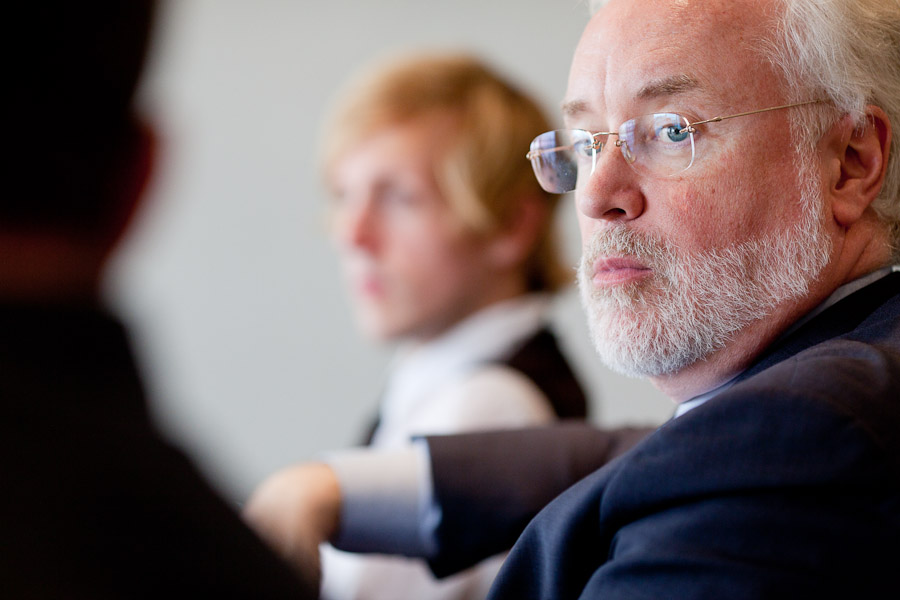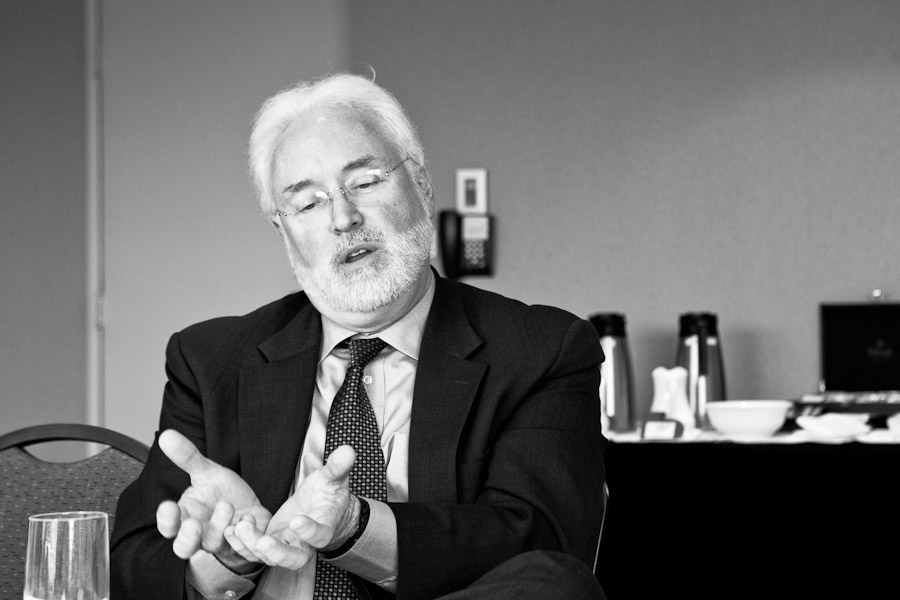Q&A: Ciena’s CTO on R&D
 Friday, August 5, 2011 at 2:43PM
Friday, August 5, 2011 at 2:43PM Gazettabyte spoke with Steve Alexander, CTO of Ciena, about optical technology and R&D. In Part 1 of the Q&A, Alexander shares his thoughts about the practice and challenges of R&D.
Part 1: R&D

"The R&D model has shifted a lot. Time has marched on and there are newer ways of doing things"
Steve Alexander, Ciena CTO
Q: Industry R&D has changed in the last decade. The optical boom of 1999-2000 resulted in venture capital (VC) money funding hundreds of start-ups. There were vibrant operator labs while system vendors had tightly-coupled optical system/component teams. Now system and optical component vendors must use hard-earned cash to fund R&D. Given the financial constraints of the optical industry, is sufficient R&D being done?
A: The marketplace in general is still a little smarting from what happened ten years ago. So when someone from the component industry warns, the market looks at it and says: ‘Here we go again’. But a great question to ask is: What is different this time from last time?
What is different this time is broadband apps. It's a great time to be a bandwidth company and that is fundamentally what Ciena is.
The first wave of networking was about connecting locations. This was the wireline phone service. That scales at a certain rate; there are so many locations on the planet and while estimates vary, there are about 500 million locations you want to interconnect.
The next wave is people connecting to people with handheld wireless devices. Well, guess what? There are a whole lot more people then there are places - about 5 billion.
Now you are at the point where machines talk to machines. Again there are ten times the machines as there are people - 50 billion things that can talk to each other.
If you sum all these inflection points, you get this phenomenal hockey stick in terms of capacity. That is what is different this time. And capacity bandwidth determines an end-user’s experience in a way that it never did in the past.
Now let's talk R&D.
The R&D model has shifted a lot. There was all this influx of VC money which created lots of new ideas and new entrants. Time has marched on and there are newer ways of doing things.
I'll point you to coherent optics: Why is coherent a good thing? A lot of the R&D in the components space went after things such as polarisation mode dispersion compensation. Lots of companies sprang up, lots of approaches were proposed, all targeted at introducing more photonics complexity to solve the problem. But you can solve that problem with basic maths if you do it with a coherent receiver and digital signal processing. It just completely changes the game. And there are other examples - the emergence of pluggable optical transceivers.
So where the R&D goes, changes.
Could the industry benefit from more overall R&D, more VC money? Sure it could.
But will we get to the stage where optical problems need to be solved and there are insufficient resources?
There is always that risk.
You have seen a reduction in the large national labs - partially funded by industry and sometimes by government - those labs, their role in the marketplace has been reduced dramatically.
Also there isn’t that attractiveness to hardware-based ventures any more. There are some here and there but by and large, if a VC is weighing putting money into something where you can get to first revenue with software, you can do it in a year or two, and with tens of millions of dollars versus first revenue which might be hardware-based, might take three to five years, and require several hundred million dollars; the calculus there is a problem.
VCs will typically fund more of the smaller [software] ones with the expectation that some of them will meet their objectives.
The specialist companies - which Ciena represents - are fortunate in that we are not trying to be everything to everybody. Ciena is focussed on the sweet spot where the bandwidth of photonics and service deliver attractiveness of Ethernet play. We focus our R&D very specifically on places where we think we can drive differentiation.
What you have seen is people focussing their R&D.
There is significant R&D being conducted in Asia Pacific. Engineers’ wages are cheaper in countries like China while the scale of R&D there is hugely impressive. How can established companies such as Ciena compete?
For a North American homegrown - which is where Ciena originated - you have to play on a world stage. That translates into being willing to step out and be a little bit uncomfortable at times in terms of going into other territories and using other ideas.
We have the Gurgaon facility in India to develop a capability to take advantage of these new emerging markets. You get the benefits of wage rate but you also get exposure to new markets and different ways of thinking.
The problem statements in certain of these countries are much different. If they are building infrastructure for the first time they'll typically have a different approach than you might have from North America and Western Europe, where you are building infrastructure that must work with the last three or four generations of infrastructure. You get a different approach which you could argue is another view of innovation and creativity.
At the same time you are mindful of what do you put where. You try to line up complexity and risk with the folks who you think are best at mitigating those; if cost is the issue you align that with the workforce that will get it done at the lowest cost. If you absolutely have to hit a release window, you'll approach it differently compared to whether you have some flexibility in time but you must hit a specific performance or cost point.
You optimise the selection of where work gets done accordingly.

'I'm not sure there is any one industry that if we looked more like them, we would be better off.'
Any sense that Ciena must work smarter because of the scale of competition from other markets that can call on more engineers that you can hope for?
From a Ciena perspective, I wouldn't say it is a new challenge.
Ciena came to market in the mid-90s and the first competitors were behemoths: the Alcatels, Lucents, NECs and Fujitsus. We looked at the resources they had and they were ten times or a hundred times bigger. We have always been the smaller, faster, nimbler start-up.
I'm not sure we view it dramatically differently now other than some of the geographies might have changed.
How do you choose what R&D to perform? Product lines have their own evolutions driven by customer demands but how do you ensure you don't miss important developments?
This is probably the problem in R&D in some cases.
The way I describe it is the white space problem: you sit in a room and you throw up all your ideas, and you throw up all the customer-asks and you stare at them and say: What did we forget? That is the white space: What didn't you remember to put up there?
What you have to do is have an environment, a culture that rewards innovation. It is acknowledging that innovation can come from everywhere and anywhere. It can come off the factory floor, out of R&D, from the CTO, out of sales, customers and marketing. It just happens and you have to have a process by which you rapidly identify ideas, you discuss them, flesh them out and put them into buckets: Is this an incremental extension of the product? Is this taking me into an adjacent space that I hadn't thought of before? Is this going to change the world?
If you are smart about how you do R&D, you purposefully fund a little bit in each. You have to be diligent about making sure that you have got that balance of investment.
Ciena is a select member of AT&T’s Domain programme. How that is influencing your approach to R&D?
Clearly it is still early days in the life of the programme because the design cycles are anywhere between six months for simple things to 24-36 months for complete new platforms.
I think the opportunity in one of focus. Because the landscape is different, you are not sitting there with ten other people at the table, there is typically you, the customer and one other. That gives you the chance to focus and dialogue differently.
It has created more of a spirit of collaboration because we are all trying to solve the customer's problem or produce more value for them. It is early days though.
Any sign that this domain experience will benefit your other customers?
It is still too early to say other than if you look at AT&T’s network, the scale, scope, richness of service and the size, that will over time be a model that other networks would like to look at. At the same time they are going to try to differentiate their offerings in the marketplace.
It is a balancing act as to what is generally applicable in the marketplace and what is specific to AT&T's needs.
How do you ensure you keep abreast of developments?
I've always said the CTO job is a technology job, but it also has talking, travelling, troublemaking, trouble-shooting pieces to it.
I get my compass set by being out in the marketplace with customers, with analysts, at industry forums and talking to peers. There is value in technical journals and meetings but I get a lot more from standing at a whiteboard with the CTO of one of our customers, or talking to their engineering groups or product managers, discussing what if? Have you thought of this? How do we solve this problem? What are your issues? How can we help?
I get a lot more out of that, and it is valuable to me as one of the folks that help steer the ship.
Have you studied R&D in other industries and learnt something useful?
I have looked at big pharmaceuticals and how the automotive industry does R&D - the platform-based approaches and such. Where appropriate I've tried to adopt those things into my thinking.
I'm not sure there is any one industry that if we looked more like them, we would be better off.
You have to look at the collaboration tools certain industries use, the multi-platform models, the consistent design reuse in certain industries; those have all been helpful to us in understanding what the infrastructure business has to look like.
In Part 2, Steve Alexander discusses optical networking and technology trends



Reader Comments (1)
Good and good writing on your part. But I wanted more meat. Perhaps more examples. Is Ciena a specialist or a general supplier? They've managed to transform themselves (innovate) from a startup to a market leader. How did they do that and how can they keep the nimble edge now that they're nearly a behemoth?
Daryl Inniss, practice leader, Ovum Components